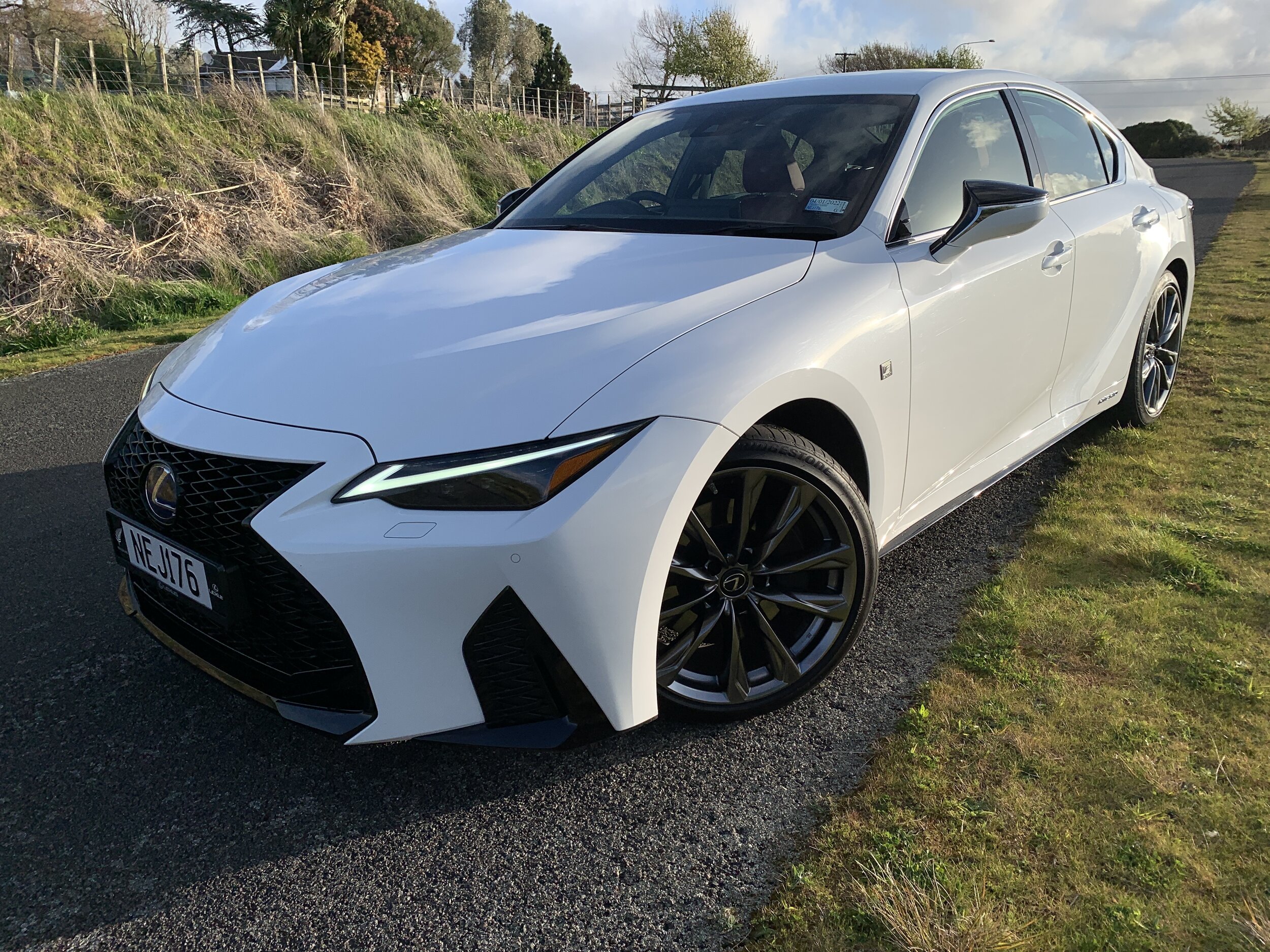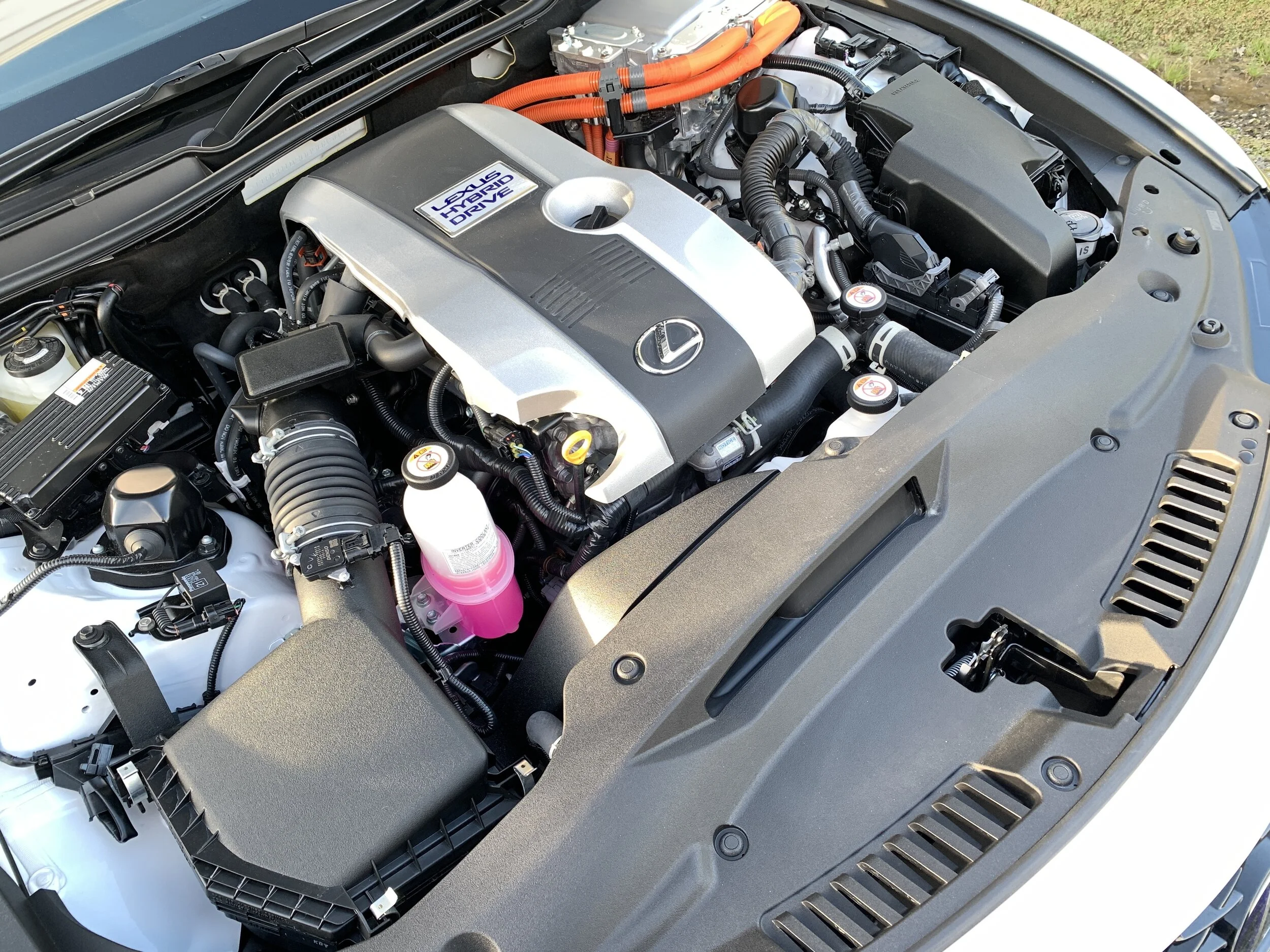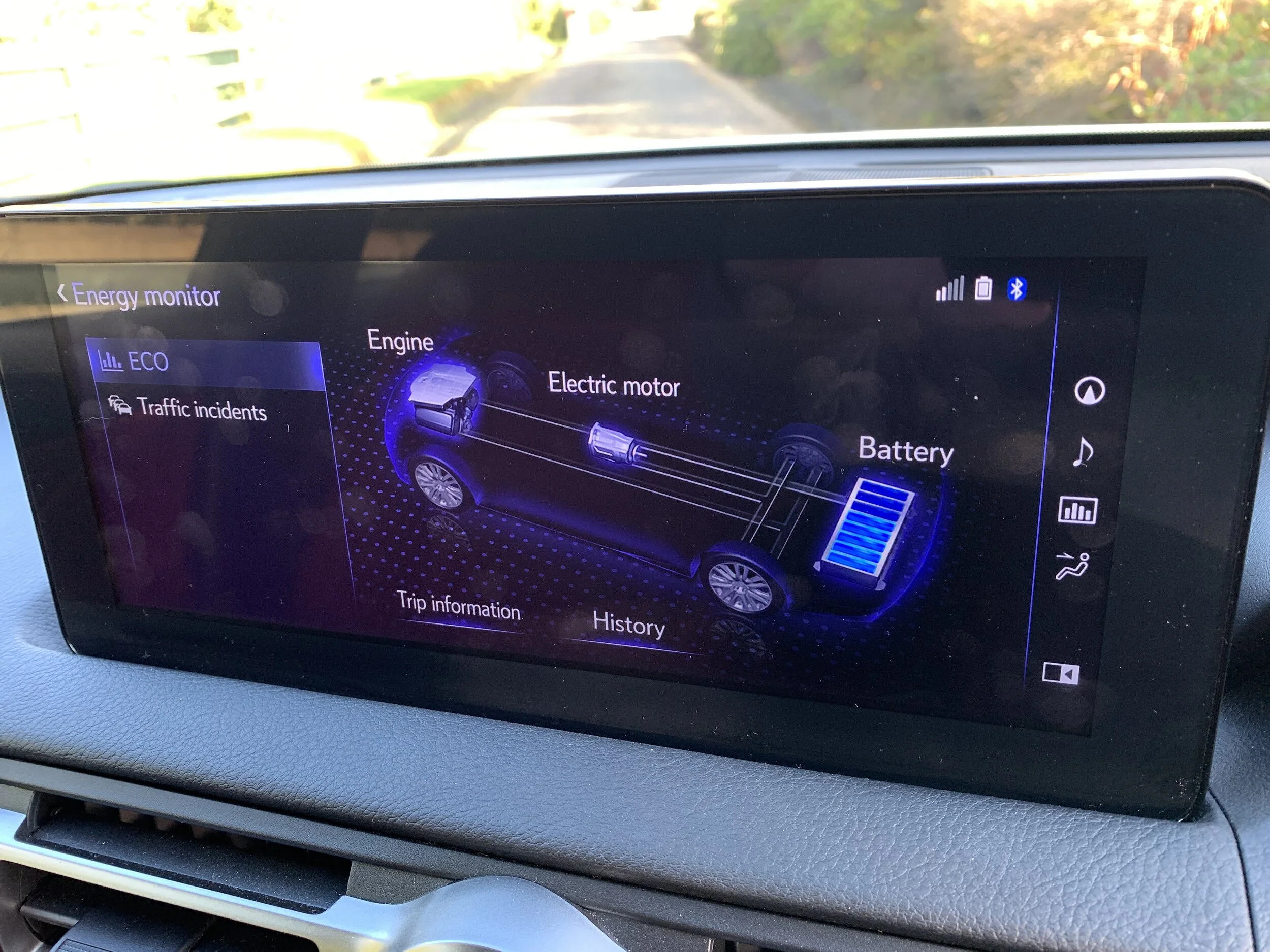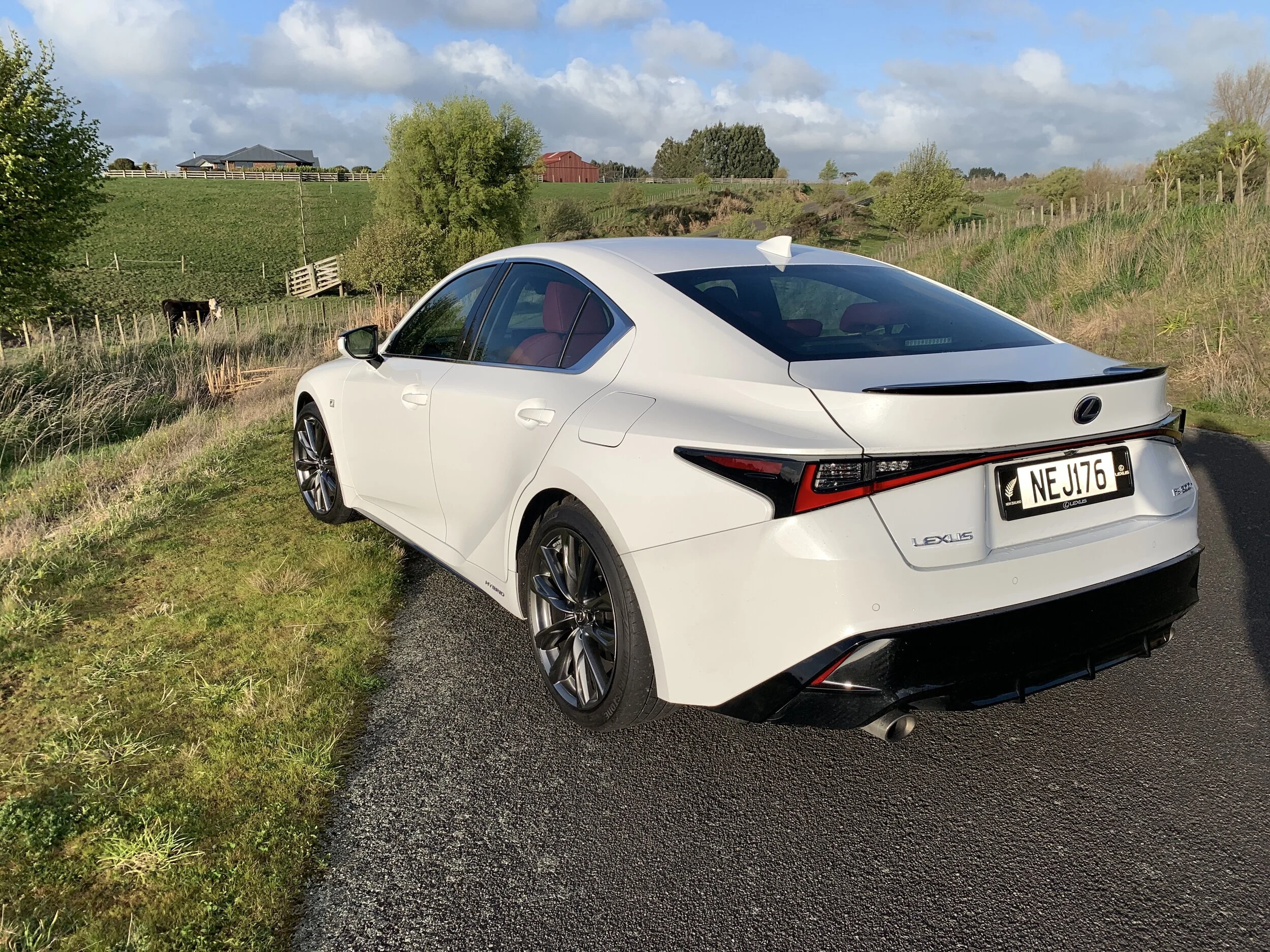Lexus IS 300h F Sport review: New face, same heart
/The smallest sedan from this premium brand looks awesome. But how’s the driving?
Base price: $85,800
Powertrain and economy: 2.5-litre petrol hybrid four-cylinder, 133kW/221Nm (164kW total system output), continuously variable transmission, RWD, combined economy 5.1L/100km, CO2 117g/km.
Vital statistics: 4710mm long, 2027mm wide, 1435mm high, 2800mm wheelbase, luggage capacity 450 litres, 19-inch alloy wheels.
We like: Build quality and brand’s fantastic reliability record, potentially low running costs, new touchscreen.
We don’t like: Not leading-edge tech to show off, uninvolving transmission.
THE irony of Nissan just over a decade ago being the first carmaker to offer a mass-produced car that ran on batteries alone isn’t lost in any conversation about the pace of change toward electric motoring.
Will it surprise to be reminded the first to take the plunge is, to date, the only Japanese brand so deeply immersed?
It’s true. While governments and vehicle producers elsewhere are staking out bold pledges to transition as quickly as possible to electric-only fleets, Japanese car companies and regulators are hedging their bets.
Best example comes from the company sets the tone for the entire Japanese auto industry, Toyota, and its Lexus luxury arm.
In November, the latter will have its first fully battery-compelled car here, a version of its NX small crossover.
It also this year offered a preview of its next full EV, a future crossover on the same platform to be used by next year’s bZ – the first Toyota-badged EV (also the NZ-bound Subaru Solterra) – and shared that, within four years, it’ll introduce 20 new or improved models, including more than 10 BEVs, PHEVs and HEVs.
It further cites 2025 as the target to offer electrified vehicle options across the entire Lexus product range, with expectation that sales of electrified models will exceed that of pure-petrol varieties. A feat already achieved in New Zealand.
But all this means what, exactly? There’s the thing. It's worth bearing in mind that Lexus and Toyota count hybrids as ‘electrified’ models. This means the share of battery-electric vehicles in this tally may not be as sprawling as it sounds.
The reality is that two brands long noted for being PHEV and EV holdouts will be taking very measured steps in that direction, and will not be transitioning away from petrol-electric as quickly as some EV enthusiasts would doubtless demand.
The reasons? Diverse. There’s a financial argument. Electrics are expensive to make, not easy to make profit from and while some markets are very keen on battery cars, global desire is far from universal.
Perhaps there’s some intransigence. Having achieved dominance of the global hybrid market, Toyota naturally desires to leverage its huge investment in the technology for as long as possible.
Some see this as a cop-out by Akio Toyoda’s operation and, certainly, the big boss has been cynical about the benefits of EVs. Yet his is an opinion widespread among Japanese car makers. Even though they are pushing forward on the electric front - Toyota has itself just announced a $13 billion investment in battery development, including its next speciality, solid state – fact is, last year, Japanese cars accounted for less than five percent of battery-electric vehicles sold worldwide. That share was mostly attributable to the Leaf’s enduring popularity.
This is why Transport Minister Michael Wood could not be more wrong when citing Japan as a primary feeder source allowing NZ to quickly reposition to an EV dominant new vehicle market. Europe is. China is. Japan? Not so much.
Considering the hybrid Lexus on test this week, the abiding thought is that, in terms of electric-fed input, it’s not progressing at same pace as like-minded product from leading European brands.
If this was a Mercedes, BMW or Volvo, it might well now be a plug-in hybrid. If it was a Jaguar, Porsche or Audi, it could well have been retired with promise that a fully electric replacement was en route.
Instead, the IS300h stands as something of a slight step-forward, yet step-sideways curiosity.
Advancement comes in the improvements to the car proper. The styling, chassis, interior environment are all better than previously. Lexus has gone to the trouble on implementing an all-new, smartly rakish body atop a massively re-engineered platform.
At same token, electric range and performance are pretty much unchanged for the simple reason that the hardware dedicated to this is, aside from some modest finessing, plucked from the previous car and the operability and outcomes have not altered either.
What it does is done well, no argument. But does it do enough to meet expectation? If real electric driving is your hope, then it’s not the one. Lithium ion batteries are imperative to that outcome; some Toyota hybrids have traded up to these, but not to a size that’ll enable EV action. In any event, this Lexus continues to marry its 2.5-litre Atkinson cycle four-cylinder petrol, which in its own right has some history, with nickel hydride batteries. Toyota has been using those since the first Prius. Acknowledging that could well become a cough-in-the-hand subject during any discussion about the merits of this car.
There’s no doubt that it would be pleasant to drive an electrified Lexus that could actually move, for tangible distance and at reasonable clip, on electric power alone; a feat only possible with PHEV and much more potent batteries.
That’s not this car. Just like its same-outfitted predecessors, it will crawl and reverse for modest distances in lovely silence on electric. But from pretty much the point when you leave your driveway or carpark it is almost always burning petrol, including at cold start.
The green side of things arrives from its ability to perform quite leanly. As much as low exhaust emissions are far more of a strength of hybrid than absolute economy, the on-test outcome in respect to the latter might stand to remind that just because it has older tech doesn’t mean it’s not bad tech.
A week of driving put almost 400kms on the clock and took in a diversity of speed zones and sealed road conditions. The average nonetheless very quickly settled down to 6.3 litres per 100km, dropping a further 0.1L/100km on the last day when it was mainly undertaking urban work. I didn’t think that too bad, though Lexus would disagree, as it reckons the car will optimise at 5.0L/100km.
I’d say achieving that degree of thrift would require great zealousness and considerable restraint - it would also mean having to assiduously resist the temptations strongly hinted at by the 2021 car’s new styling package.
The IS has long been a sharp-looking car but the latest redesign really lifts its street presence all the more. Lexus here having chosen to this time allow the hybrid to provision with the same F-Sport trim that also continues on the V6-engined IS 350 adds a fantastic finishing touch.
A big test of kerbside allure is to park it in a high foot traffic zone then view, from afar, the attention it receives. The IS gained plenty of second glances and it appeared to start a few conversations as well. Being the centre of attention is always a good thing for anything wearing a premium badge; in this instance it’s not so flashy as to seem gauche.
In addition to being a good-looking car it has to be the snappiest-looking current Lexus. While some top brands engage in cloning to ensure their models carry the same corporate DNA, Lexus has managed to produce models that look different, but share enough form language to obviously be from the same stable. This all works really well on a vehicle of this shape and size. Parking the new version beside the previous car, new headlamps and tail lights are most immediately evident, along with a revised grille, but the car’s whole stance seems more energetic and interesting.
The handsome exterior hides a cabin that looks, and feels, like it could easily cost more than the cited price tag. The revised digital cockpit draws some inspiration from the LFA supercar that, though now a museum piece, still rates as a coherent and highly relevant design.
As expected, the IS is very well equipped and has quite a few gadgets to help take the strain out of driving. Keyless entry means you don’t need to fumble for the key to unlock the car, while the easy entry system moves the driver’s seat and steering wheel back to improve access. The Remote Touch Interface controller (a sort of mouse-like pointer) remains a little awkward in its operation but good news is that, with the car now achieving a touch-operated screen and also Apple CarPlay, you can simply bypass the factory provisions for phone use and navigation.
There’s quite generous space in the front, and passengers in the rear have enough room to get comfortable, though the rear quarter is quite enclosing. Lexus make some of the comfiest seats in the business, too. In this version, all the trim was done in what I’d call as Wattie’s tomato sauce red. It looked better than it sounds and, frankly, even if the colour doesn’t suit you’ll marvel, surely, at the quality of the materials and how beautifully-made it is. That goes for the whole car, actually. Lexus has no time for imperfect paint, poor panel fit or untidy stitching.
The rakish look and the F Sport specification bringing a Sport Plus mode and adaptive variable suspension leaves impression this could be quite the sports sedan.
Certainly, the tweaks mean it's better on the road than was previously the case. Sure, the steering – while accurate and pleasingly weighted – lacks a little feel – but it’s more enjoyable to drive than the outgoing model.
That CVT gearbox unavoidably flavours the experience. It tends to feel a bit slow in real-world driving because this transmission causes engine revs to soar under hard acceleration, making the connection between pushing the throttle and picking up speed feel unconnected.
Still, it’s undoubtedly a high-quality product and, if the pace isn’t as snappy as the looks suggest, there’s compensation in it being extremely smooth and suave.
Despite this model’s gloriously big wheels and low-profile tyres, the ride is smooth and calm. And then there’s the noise – or complete lack of it. Unless you’re accelerating hard, there’s almost total serenity in the cabin. That sort of stuff might not quench a thirst for aural thrills, but it’s still an impressive accomplishment.
The IS has excellent brakes, but the pedal feel is something that requires consideration; because there’s a regenerative side to their function, the line between braking too hard and not braking hard enough is fine. But once you’re used to them, and adapt your driving style, it’s all good and beneficial, because the car then begins to recoup significant energy back into the battery. This charge is then reused as soon as you drive off, as the electric motor comes in before the petrol engine. The switch from all-electric to hybrid drive is seamless, with no hesitation from the drivetrain.
As much as Sport mode adds genuine edge, the one you need to use if out to show good economy is … well, Eco. It helps the hybrid system maintain electric drive for as long as possible. The change does dull throttle response, though.
Driving smoothly and braking early when, say, heading into an intersection might sound like a prescription for ‘old person driving’ but it gives the hybrid system plenty of opportunity to plough energy back into the battery as you coast to a halt.
Of course, if you’ve been used to ways of any hybrid Lexus, then this will seem both highly familiar, if not old hat. As well it should be; after all, parent company Toyota spearheaded the hybrid revolution nearly two decades ago.
And there’s the thing. While the IS is a brilliantly built and very well-executed car, it really only shows progress in its design. Those seeking a true advancement in electric-involved engineering will have to look elsewhere.





















